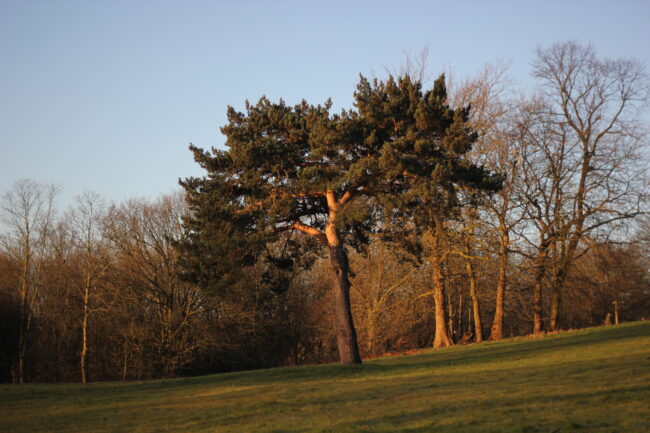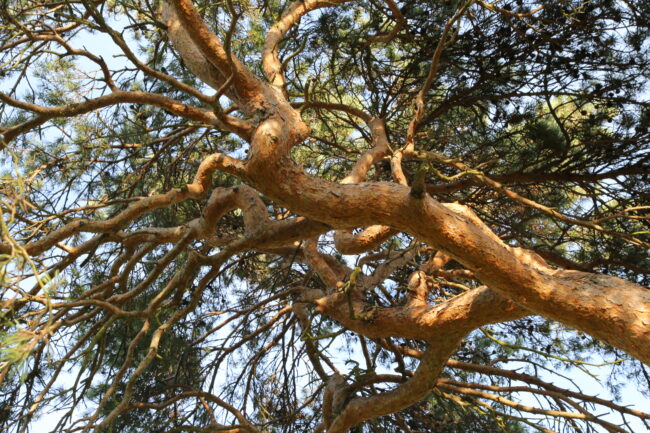Stephen Middleton from the Friends of Alexandra Park is kindly introducing us to some of this favourites. Here’s his selection for July…
Sun catching the bark of our September Tree of the Month is a stunning sight. The upper bark of the Scots Pine (Pinus sylvestris) is a bright orange colour. Wait for a sunny day and gaze up into the canopy of this tree down on the South Slope and admire….

The Scots pine is an evergreen tree with leaves in the form of needles which the tree holds onto throughout the year. The grey-green needles are quite short (typically about 5cm long) and are a little twisted. Each individual needle lasts up to about three years.
This is one of only three conifers native to the United Kingdom. Can you name the other two? (answer at the end of the article)
In the month of May, red female flowers appear on the shoot tips of that year’s growth with the yellow male flowers on those of the year before. The familiar cones develop when the female flowers are pollinated and take a couple of years to mature.
Scots pines are happy to grow on poor soils, but are intolerant of pollution. This conifer can be found growing over most of northern Europe and can reach a height of up to 35m.

In England, it is the main food source for the caterpillars of one of our larger moths, the pine hawk-moth. Less good news is the possibility of the pine processionary moth caterpillars coming into the country from the continent. It can cause skin rashes (it is related to the oak processionary moth which is already in the park – you may have seen the warning signs).
The wood from the Scots pine is used as wood pulp, in the construction industry, for ships’ masts, furniture and telegraph poles. Wood tar can also be extracted from the wood and then be used for waterproofing as well as in food and medical products.
Several young Scots pines can be seen in “cages” nearby. They were planted in 2020.
Answer to the little poser: Our other two native conifers are the yew (our longest lived tree) and the juniper (source of the flavouring for gin).





